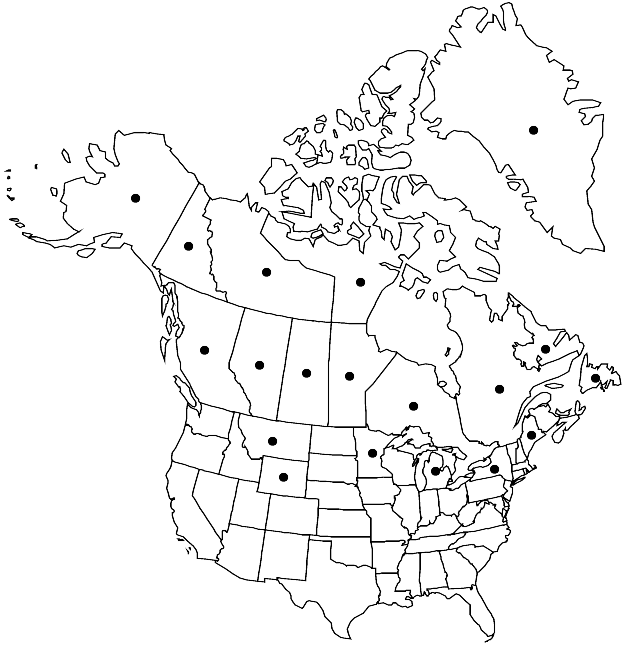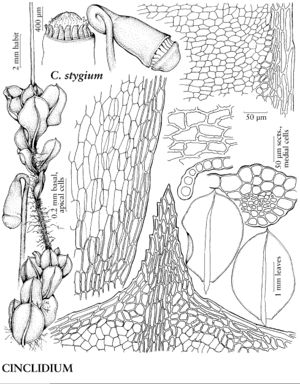Cinclidium stygium
J. Bot. (Schrader) 1801(1): 27, plate 2. 1803.
Plants 3–8(–13) cm. Stems dark brown. Leaves reddish green, reddish brown, or black when old, spreading, ± flat, not strongly reflexed when moist, broadly elliptic, ovate, obovate, or rarely ± orbicular, (2.5–)3.5–4.5(–6) mm; base short-decurrent, occasionally not decurrent; margins narrowly to broadly recurved or rarely nearly plane, 1-stratose; apex obtuse or rounded, sometimes acuminate or acute, apiculate or cuspidate, apiculus sharp, cusp usually toothed; costa percurrent, excurrent, or rarely subpercurrent; medial laminal cells elongate, (50–)60–75(–100) µm, in diagonal rows, not collenchymatous; marginal cells short-linear or linear, in (2–)3–4 rows. Sexual condition synoicous. Seta yellowish, 4–7 cm. Capsule yellowish, ovate-elliptic, 2–3 mm. Spores 25–70 µm.
Phenology: Capsules mature summer.
Habitat: Fens, alpine seeps, in shoreline pools
Elevation: low to moderate elevations
Distribution

Greenland, Alta., B.C., Man., Nfld. and Labr., N.W.T., Nunavut, Ont., Que., Sask., Yukon, Alaska, Maine, Mich., Minn., Mont., N.Y., Wyo., South America, Europe, Asia.
Discussion
Cinclidium stygium is often hidden among other mosses and sedges on wet soils. The species is distinguished by its broadly elliptic, ovate, or obovate leaves often with a sharp, squarrose apiculus or cusp.
Selected References
None.
